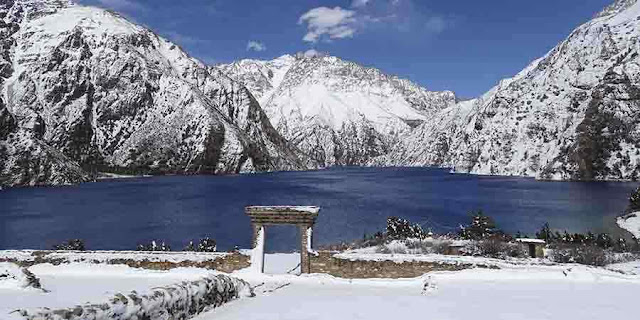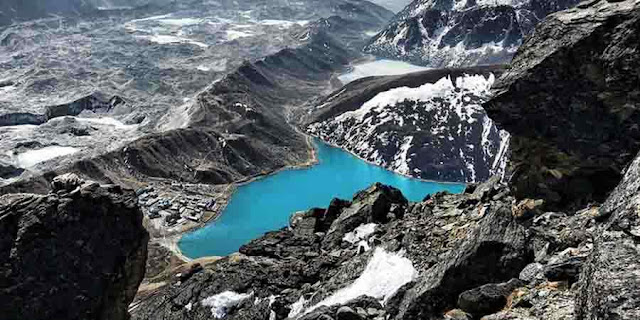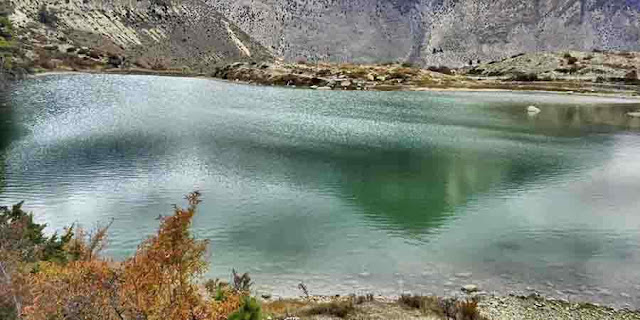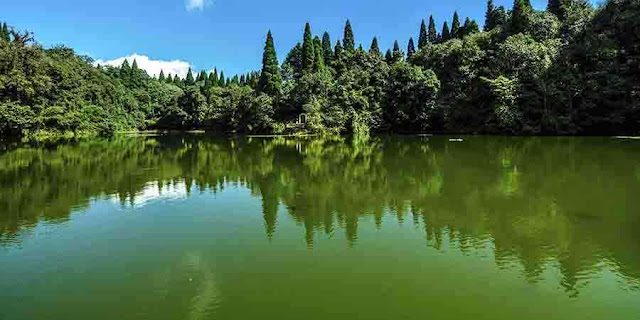The top famous lake in Nepal, Nepal is the place where the wall of the mountain and the highest peak in the world and the beautiful geographic structure and ice glacial this thing make many ponds. Here we going to explore the famous lake in Nepal. In Nepal, there are many lakes. but few are famous.
What is a lake?
A body Water fills in a depression Earth's crust is called Basin pond Are usually quite large in size The land is fed further and is drained by one river or brook.
Water like the lakes of the sea and rivers Not cool enough Ways nor strong currents Since millions of recognized lakes.
Widely and place Sometimes small lakes are called ponds And the big ones are called about the sea.
One thousand thirty-three thousand An area of square miles is the Caspian Sea Considered to be the world's largest.
The deepest lake in Russia ponds Baikal which is about one mile inside Depth.
pond form in many different forms Ways Repel glaciers and melt Leave the lakes in their path.
Humans also often build lakes hydroelectricity dams.
here top famous lake in Nepal are as follow
The following distance is measure from Kathmandu city capital of Nepal
the following altitude is measure from above sea level
S.no.
|
lake
|
location
|
Distance
|
Area
|
Altitude
|
Avg. Depth
|
Time to visit
|
1
|
Rara
|
Mugu District
|
1017.3 km
|
9.8 km²
|
2990m
|
100m
|
sept-nov, April-may
|
2
|
Phewa Taal
|
Pokhara
|
210 km
|
4.4km²
|
742 m
|
20 m
|
“
|
3
|
Tilicho
|
Manang district
|
181km
|
4.8 km²
|
4919 m
|
85 m
|
“
|
4
|
Paanch pokhari
|
Sindhupalchowk
|
83 km
|
??
|
4100 m
|
??
|
“
|
5
|
Begnas taal
|
Pokhara
|
195 km
|
3.28 km²
|
650 m
|
7 m
|
“
|
6
|
Rupa taal
|
Pokhara
|
192km
|
1.35 km2
|
600 m
|
6 m
|
“
|
7
|
Shey phoksundp
|
Dolpa district
|
304 km
|
4.94 km²
|
3589 m
|
136 m
|
“
|
8
|
Gokyo
|
Solukhumbu district
|
By air 137 km
|
1.96 km²
|
4700 m
|
??
|
“
|
9
|
Dhumba
|
Jomsom
|
347.6 km
|
L=150m
W=100m
|
2830 m
|
85 m
|
“
|
10
|
Jagdispur
|
Kapilvastu
|
316.3 km
|
225 ha
|
197 m
|
7 m
|
“
|
11
|
Tso Rolpa
|
Dolkha
|
??
|
1.5 km²
|
4540m
|
230m
|
sept-nov, April-may
|
12
|
Godagodhi
|
Kailali
|
+654 km
|
2563 ha
|
205 m
|
4 m
|
“
|
13
|
Dudh kund
|
Solkhumbhu
|
+126 km
|
??
|
4560 m
|
??
|
“
|
14
|
Dudhpokhari
|
Lamjung
|
+185 km
|
??
|
5300 m
|
??
|
“
|
15
|
Indrasarovar
|
Makwanpur
|
+88 km
|
7 km²
|
1534 m
|
??
|
“
|
16
|
Maipokhari
|
Illam
|
684.4 km
|
90 ha
|
2150 m
|
7.25 m
|
“
|
17
|
Gosaikunda
|
Rasuwa district
|
44 km
|
14 ha
|
4380 m
|
??
|
“
|
Rara lake
Rara Lake is the largest freshwater lake in Nepal, the Rara lake is located in the far western corner of Nepal near the Tibetan border.
Rara Lake is the most incredible and fascinating trek of all the Himalayan ranges, located to the northwest of Kathmandu in the remote area of Karnamali.
If you are looking for wilderness and solitude, then this trek is an ideal option. The route is very 'off the beaten track' and gives a great glimpse of cultures and scenery.
It is surrounded by lush green vegetation and is famous for various flora and fauna. Boating is also a major attraction.
However, off the beaten path, it is accessible with multiple modes of transport with the option to fit tables and trekking desires at all times. Nepalganj city is a fairly good entrance to this area
Phewa lake
Phewa Taal is the second largest lake in Nepal and one of the main lakes of the Himalayan pond system.
The main attraction of Phewa Taal is its huge amount and extends into the Pokhara City.
The crystal clear pond water is the perfect natural mirror for scenic beauty during cool weather. The Annapurna Himalayan range appears entirely on the lake with vivid images of peaks such as Machhapachar, Dhaulagiri, and Annapurna range.
It is the most popular and most visited lake in Nepal. It has an average depth of about 8.6 meters and a maximum depth of 24 meters.
The maximum water capacity of the pond is about 43,000,000 cubic meters.
The main tourist attractions of Phewa Taal are the Tal Barahi Vishnu Temple on the lake island in the center of Phewa Taal.
Sarangkot and Paragliding, Sarangkot is the only place in Nepal for paragliding, from where you can fly to the Phewa Lake.
Tilicho lake
Tilicho Lake is one of the tallest in the world-famous at 16138 ft (4919 m)
Trek starts from Manang (1200 ft) Most trekking groups begin trekking exclusively from foreigners.
The tricky part of this track is that you have to go through a landslide area, it is actually quite dangerous.
It can be very scary at times especially there is no comfort to see uphill or downhill parts. But the good thing is that the visuals are amazing and incredible. You go very fast in a high-wind
Tilicho Base Camp has only 4 hotels
Tilicho is the name of a lake below the northern face of Annapurna (known as the "world's highest pond") at 4900 m., Even though Nepal has lakes above 5000 m.
Anyway, it is a wonderful place, especially after heavy snowfall.
Tough growth in "winter" conditions, but surprising growth, especially in winter conditions ...
Surrounded by beautiful mountains, the beautiful blue lake sits in the center.
A clear reflection of the mountains is seen on the blue water when the air is soft in the morning.
Panch Pokhari
There are a lot of Panchpokharis all over Nepal. And all of them have their own appeal.
Panch Pokhari trek We know very well Paanchpokhari (five ponds in Nepali) of Sindhupalchok.
The roads were very narrow. The roads were even worse after crossing Jiri.
There are lots of Chauri Gai (high altitude animals, cross of Hilly Cows and Himalayan Yak) on the way and breathe taking waterfall you can see
Before reaching Paanchpokhari, we reach Jatapokhari. In between Jatapokhari and Manedada, there were no shops or teahouses on the way.
Normally on Janai Purnima, huge pilgrims came to take a bath in this pond. It is amazing to see people take a dip in the cold water in such freezing weather.
They believe that by taking a bath all sin will be forgiven. for Hindu and Buddhist, this lake is famous in Nepal
Begnas Taal
Begnas Taal has been the oasis of time throughout these centuries since it is a little far off from the main city. the water does not take the attention it deserves.
In recent years because of the convenience of easier transport and the strength of the internet, there has been drastic. change in the number of people visiting the water.
The Begnas water is separated from the rupa water by the wooded hillock named Panchbhaiya danda.
Since ancient times locals have depended on this water's water. and food for their everyday life.
Today food land is permitted on the water, but it is forbidden to use lake water.
Rupa Taal
Rupa Taal is the freshwater water in Nepal located at the rupa municipal of the Kaski region.
It is the third biggest water in the Pokhara city of Nepal.
This water is elongated north to the region and is fed by perennial streams.
Its watershed region is 30km2 where the primary flow of food is from Talbesi water, whereas Dhovan Khola is this feeder water with its opening Taal Khola in Sistani ghat.
It supports the number of collections and faunal varieties. the total of 36 varieties of water birds have been shown at the water which constitutions almost 19% of the total 193 wetland-dependent birds found in Nepal
Shey Phoksundo lake
A visit to Shey Phoksundo lake, Nepal's second deepest water can carry you to another earth.
This alpine water is circled by mountains in colors of green and while some covered with woodlands.
Some with snowfall, and the Buddhist community named Ringo place on its southern side.
Even as such as this place the path leading to its is as impressive. consider seeing rivers and sharp waterfalls rough cliffs, cypress and pine woodlands, and likewise creatures like musk deer, dark sheep, Himalayan tahr, etc. Within that Shey Phoksundo national park as it lies.
You may still be in accommodation at the community from where you can wake up to the beautiful sunrise atop the mountains also. don't forget to leave and explore the numerous monasteries and stupas in this region.
Gokyo lake
The bright clean blue and green waters of the Gokyo lakes represent one of Nepal's most unforgettable mountains.
The look of the base of the six holy lake, Gokyo water with mt. CHO Oyo bearing behind it majestically, and this view of mt. Everest and other long peaks standing proudly in it as seen from Gokyo (small height over Gokyo water) represent the leading attraction of the Gokyo trek.
Gokyo journey is 13 times trekking experience. Nepal pioneer treks and journeys are always here to make the journey easier, comfortable, and more memorable. they include the highest freshwater system in the world, in around 5000 meters.
This Gokyo lake journey is perfect for people who want to travel in the Everest area, but who need more variety of views and lesser nights spent in very high distance.
Gosaikunda lake
The Gosaikunda lake trek discovers the lakes and mountains of the area as well as the following ridges.
Crossing ravines and suspension bridge, winding through rhododendron oak and pine forest and provides an insight into how the people of this area live.
The Gosainkunda water trip cones within Langtang national park.
Gosaikunda is not just the Ramsar place (since 2007) meaning that it is the wetland of global value, but is the place considered sacred to both Buddhists and Hindus.
On the period long journey (with this expectation to continue longer) there are spectacular views of this Manaslu valley Ganesh Himal variety, Tibetan peaks, and Langtang valley Lirung as well as the three lakes of Gosainkunda, Saraswati Kunda, and Bhairab Kunda.
For people who have a fascination for culture and mythology as well as a passion for mountains and nature but don't want to trek at high altitude, this is the amazing lake trip.
Dhumba Lake
On the bike to Jomsom, the famous city of Mustang, near Thini village of Mumbang, the circumference of Dhumba Lake is 1.5 hours walk or 25 minutes away.
This lake is considered a holy pond where the people living around are associated with many mythological stories.
Situated on top of a naturally semi-arid mountainous desert, the pond looks stunningly beautiful.
In addition to the beauty of the pond, the view of Jomsom below looks spectacular, as well as panoramic mountains filled with snow and dry rocky hills with little vegetation.
Damba Lake, if you are traveling to Mustang. Mumba.Nilgiri, Dhumba Lake resting at the base of Mustang, Gharpajhong Rural Municipality.
It is about an hour's walk from Jomsom or Siang to reach Dhumba Lake. This lake has a historical and religious affiliation with Kuchup Terenga Gompa.
Jagdishpur Lake (Kapilvastu)
Jagdishpur Taal is the largest artificial lake in the country which is located in Kapilvastu. Jagdishpur Reservoir is a reservoir in Jahil Village Development Committee, Kapilvastu District, Nepal.
With a surface area of 225 hectares (556 acres), it is the country's largest reservoir and an important wetland site.
The Jagdishpur reservoir is listed in the Ramsar List of Wetlands of International Importance, as defined by the Ramsar Convention.
The Jagdishpur reservoir was constructed in the 1970s for irrigation purposes. It is fed by a canal from the nearby Banganga River, which runs into the Chure Hills.
The reservoir is surrounded by cultivable land and some small lakes that serve as a buffer zone for bird movement. In 2003, the reservoir was declared a Ramsar site.
Despite this, its birds and other creatures have not yet been studied in great detail.
trekking in Himalaya < internal link
Tso Rolpa Lake (Dolkha)
Tsho Rolpa is one of the largest glacial lakes in Nepal, located at an altitude of 4580 meters in the Ralwaling Valley. Dolakha District
The brother of Tilicho lake. Tsho Rolpa (also Chho Rolpa) is one of the largest glacial lakes in Nepal.
Situated at an elevation of 4,580 m (15,030 ft) in the Rolavalinga Valley this pond has increased considerably in the last 50 years due to glacial melting in the Himalayas.
The pond threatens to burst through its makeshift dam, threatening the lives and livestock of more than 6000 villagers living around the Tamakoshi River.
In 2012, UNDP reported that an early warning system installed by authorities in the late 1990s, which had deteriorated due to lack of maintenance, would be replaced by more modern warning systems for glacial flooding from the lake.
Godagodhi Lake (Kailali)
A little Godagodhi lake is a wetland jewel in the flat region of the far western Terai, establish in 2003, located in the Kailali district. pond is very important culturally historically and environmentally this is one of the most attractive tourist destinations in Sudur Paschim.
It is surrounded by tropical deciduous forests this lake is very rich of flora and fauna the
forests and wetlands serve as wildlife were returned between the thigh lowland and the Siwalik hill you can find many wild animals.
Dudh Kund (Solkhumbu)
Dudh Kund trekking is a popular trekking trail in the Solu Khumbu region, although less elevated, then in the Khumb Himal Range, neighboring Dudh Kunda trekking starts from Giri, after a 7, 8-hour drive from Kathmandu. Highest height 4561
Dudhpokhari (Manang Kaki Lamjung)
Dudhpokharai is located 5300 meters in the border of Lamjung Manang and Kaski district and many pilgrims come to take the Dudhpokhari bath. Dudhpokhari trek is a high altitude milky lake which is considered to be adorable to Lord Shiva.
Indrasarovar (Makwanpur) Kulekhni Dam
Indrasarovar, commonly known as Kulkhani, is located in the Makwanpur district of Nepal. It is a hydroelectric dam. It is famous for its landscape and fishing. It has beautiful biodiversity with clear crystal water.
Maipokhari (Illam)
Mai Pokhari is a wetland in the Illam district of Nepal. The wetlands are about 2100 m in the mountainous regions of the Himalayas. this pond has a nine corner it shape like a star this lake is famous for religious purposes.
Conclusion
If you want to visit a beautiful lake in Nepal you need to hire a guide. There are many agencies in the capital city. You can also visit all this place without a guide but it will be a little difficult for you.
Once in a life, you need to visit a famous lake in Nepal.
If you wont to visit please comment below or visited already than to comment below.

















0 comments:
Post a Comment